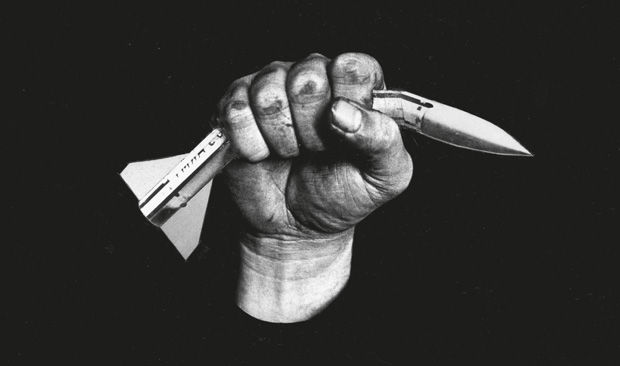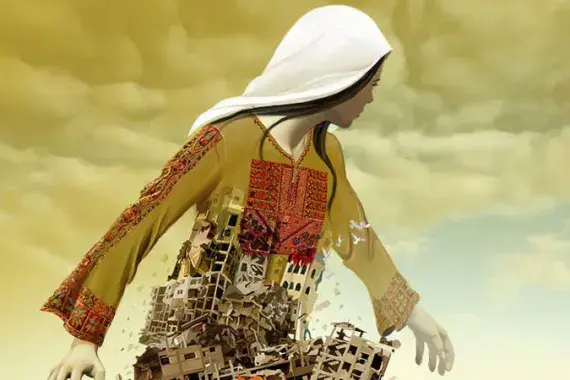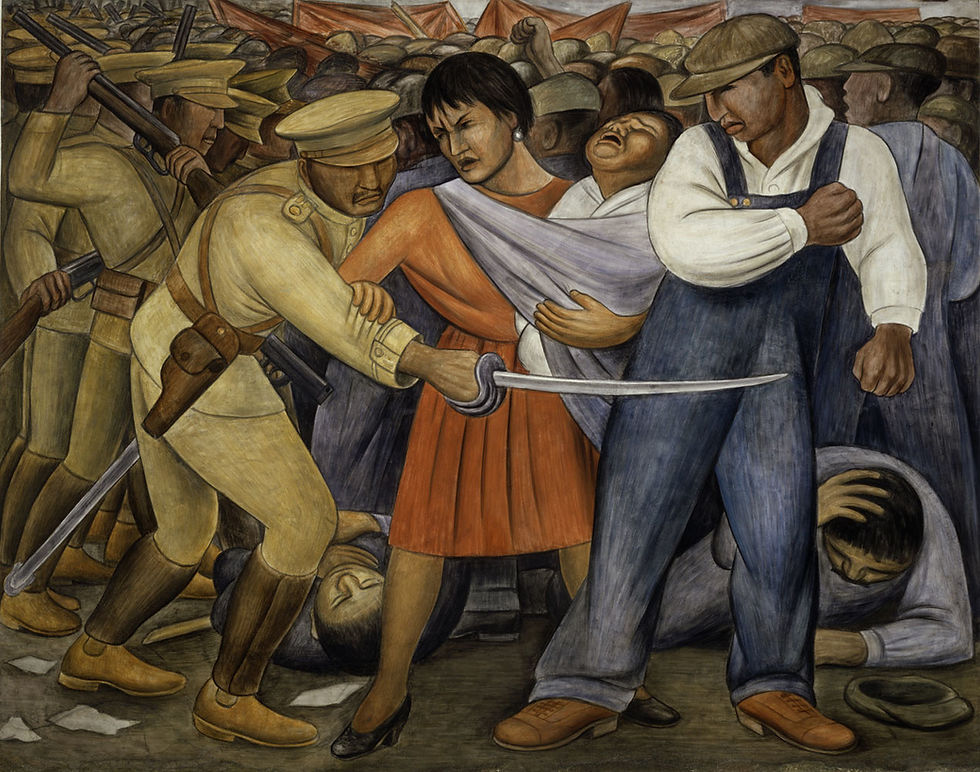Art and Politics: Where Brushes Meet Banners in Bold Sweeps!
- Mayuri
- Jul 30
- 5 min read
Updated: Jul 31

Poetry is not a luxury. It is a vital necessity of our existence - Audre Lorde.
Art has always played a passive role in politics. When you think of revolution, the first thing you might think of is speeches or protests. Right? But frequently, art also has an equally important role, formulating thoughts and motivating individuals to act. From the ancient world to contemporary movements, art and politics have been a weapon in the arsenal of those seeking change.
There are some emotions, some thoughts, that cannot be narrowed down to mere words—exactly here, art comes in. Conviction can bring people together in the name of a cause, motivate them, or force everybody to acknowledge something they might otherwise not. Art history has been a potent handmaiden of political expression, for both those in power as a means to perpetuate their rule and from its detractors as a catalyst for change.
In this piece, we take a look at how art has shaped the most important political movements in history and how it is still an incredibly influential force in the modern world.

Art and Politics: The Roots of Artistic Protest
As the Mexican muralist Diego Rivera wrote, “My art is my weapon for revolution. On canvas, I fight for rights and justice.”
His murals were no mere decoration; they were bold messages. They dramatized the life of working people and upheld the values of the Mexican Revolution and socialist causes. Rivera used bold color and indelible imagery when showing inequality, class divisions, and power imbalances.
Rivera was not alone in making art an act of war. Artists through the ages have given their work to bolster or oppose social movements and political orders. One of the classics is Paul Revere’s 18th-century engraving of the “Boston Massacre.”

The image of British troops as brutal murderers by the Americans swayed British public opinion in favor of American independence. It wasn’t mere art, but a revolutionary weapon that changed the course of history.

Street Art: The Voice of the People
“Art has an explosive power that can awaken consciousness and inspire revolution.” — Pablo Picasso.
In 2025, the streets have become an effective medium of protest. Artists, including Banksy and Shepard Fairey, take over public spaces as canvases to provoke the viewer on everything from capitalism to inequality. Street art, unlike the art of galleries of the past, is political and accessible for all audiences, without the constraint of a gallery or permission. It’s a platform for voices too often marginalized, as in the Black Lives Matter and Hong Kong protests. An international language builds solidarity and raises awareness of the important social issues of the day.
The Power of Art in Protest: Diverse Forms of Expression
Art As a Weapon of Revolution: Banksy once famously said, "You can use anything to inspire art, can change people, and people can change the world. My walls are my paintings, my weapon. This reflects how various types of art can be potent forces of protest and social change.
Forms of Art in Protest: From street art in urban areas to graffiti to installation art in open spaces and digital pieces, art is attuned to protest, providing original ways to contest the status quo.
Quality Art's Crucial Traits: Art starts to become powerful when it is related to immediate concerns, unique in form, and dares to challenge authority, reaching out to the people to invoke thought and action.
Protest Art: Caricatures, street art and socially-engaged art are some of the many faces protest art takes on, each with the goal of inciting conversation, solidarity and transformation.
Art continues to be a changing and effective mode of activism, answering social problems with creativity and audacity.

The Ethical Dilemmas of Artistic Protest
Protest art acts as a war within the artist’s soul, particularly in revolutionary times. Artists today walk a tightrope of artistic freedom versus social responsibility, negotiating such ethical dilemmas as not creating propaganda while supporting a cause.
Frida Kahlo, celebrated for her political art, said: “In each of my works, I have tried to reflect the wonderful aspect of magic realism, the great contribution to Western painting.”
Her personal, political feminist art is one of defiance and self-expression. In 2025, artists still grapple with these tensions, as has been famously documented in recent art memoirs by artists like Jenny Offill, who reckons with her role (or lack thereof) in social movements and how to make art true to her values while not getting co-opted by political powers.
The Future of Art in Political Movements

As we move forward, it’s apparent that art will remain essential to political movements. But Artist Statements and the way we give and receive art may well change, given the march of technology. The tools have the potential to make it a more interactive experience, with audiences able to engage in the narrative, like the (often virtual reality) scenes that make them feel like they’re on the ground of war zones, or living under a regime.
But the application of tech to art is not without its ethical implications. The authenticity and emotional intensity of AI-generated art are questioned, and this inhibits the inclusion of AI in political movements.
And, they said, art is only becoming more available on the internet, where it could be churned into propaganda. Despite these difficulties, art's future in political movements is promising; artists continue to push the envelope and reflect radical change.
The Colors & Brushstrokes of Change

Art has never just been pretty pictures; it has changed the game in politics! From inciting revolutions to questioning the status quo, art has long been at the center of history-making moments. Whether the French Revolution or the Civil Rights Movement, art and politics have influenced a lot.
Artists are going to make even more available, immersive and dynamic political art. But there’s always one thing that hasn’t changed: art will keep telling the truth, inspiring action and forcing us to see the world differently.
Picasso nailed it—art might be a lie, but it sure makes us face the truth!
FAQ
What Are The Moral Dilemmas Of Protest Artists?
For those among the artist community who choose to be part of protest movements, they struggle with the internal dilemma of their desire to express themselves with the ability to serve a bigger cause. They have to juggle creative freedom and a realization that their work may serve as a tool of political influence.
How Has Art Been Used To Protest Throughout History?
Protest art is increasingly easily available too, readily seen in public and online, offering artists an opportunity to find a global audience more readily.
What Makes Protest Art Effective?
It is frequently urgent and direct; it’s art that is meant to make us think, or move us to act. It is one of the most effective tools we have for advancing social justice.


